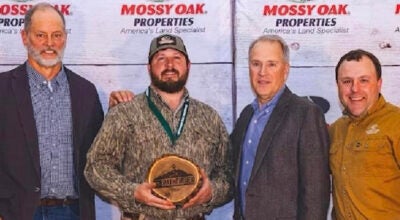Woody Woodpecker lives in my yard
Published 8:45 pm Saturday, July 23, 2016
A cartoon star lives in my yard. The pileated woodpecker is as large as a crow, sports a red cockade and must have been the inspiration for the cartoon character Woody Woodpecker! The pileated woodpecker is one of the largest woodpeckers found in North America. Only the Imperial woodpecker of Mexico and the suspected extinct Ivory-billed woodpecker are larger.
Before I ever saw this bird, I heard it! The pileated call is a loud, far-carrying laugh, sounding more like a “jungle bird’ than what we expect to hear in our southern forests. Next came the rapping – sounding like someone banging a hammer against a tree. Once I realized what inhabited the forest behind my house I was intrigued, curious and smitten.
My cartoon character neighbor has a large red crest, black body, white stripes on its neck and face. It also has yellow bristly feathers over its nostrils that keep out wood chips. Male and female pileated woodpeckers are similar. Males have a red forehead, and females have a gray to yellowish brown forehead.
A large part of its diet consists of carpenter ants and beetle larvae. The pileated uses its sharp bill to pull bark off a tree, exposing colonies. It then uses its long, sticky tongue to poke into holes and drag out the ants. It also digs out large rectangular holes in trees to create roosting and nesting spots and to expose insects.
The pileated occupies a large range and is quite adaptable. Its ability to survive in many wooded habitat types has allowed this species to survive human habitation much better than the more specialized Ivory-billed woodpecker. Pileated woodpeckers have a large population size, and despite being non-migratory are protected under the U.S. Migratory Bird Act.
I’m proud to have Woody Woodpecker living in my backyard. I love hearing the jungle-like laugh and constant rapping. On those days I’m lucky enough to catch a glimpse of this handsome bird, I smile thinking of my cartoon neighbor.
Rebecca Bates is director of the Lincoln County Cooperative Extension Service. To contact her, call 601-835-3460





